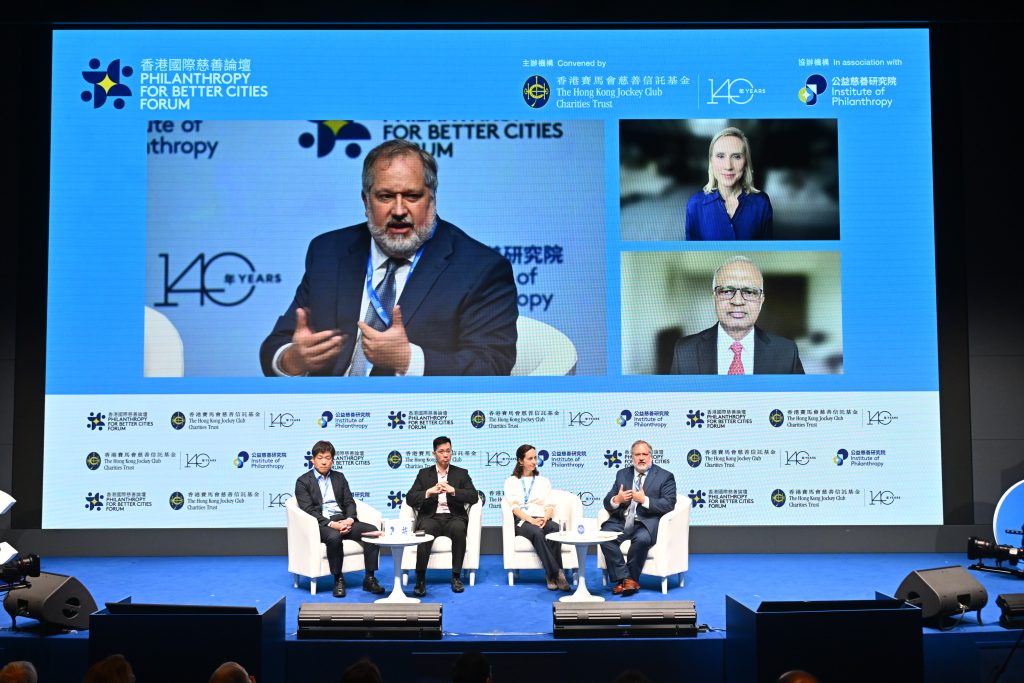Asian philanthropy stretches back hundreds of years. Institutional philanthropy, however, is in its infancy. In fact, half of Asia’s largest philanthropies are under 20 years old, compared to just 20 per cent of the world’s largest funders in the same period.
According to a landmark report launched at PBC 2024 by consultancy firm Bridgespan with support of the Institute of Philanthropy, findings show the stark divide in institutional philanthropy between the so-called west and east.
‘This is not the norm in the world, and it just tells you how young this field is with all the possibilities ahead,’ William Foster, managing partner at Bridgespan and moderator for a session highlighting the launch of the report at The Hong Kong Jockey Club Charities Trust’s Philanthropy for Better Cities Forum (“PBC”) 2024, told Alliance magazine.
When contrasted to global funders, the gaps are both large and closing.
Bridgespan’s report finds that the world’s top 20 funders all come from ‘the west’ – with one exception. In 15th place, The Hong Kong Jockey Club Charities Trust stands as the sole Asian institutional philanthropy in a list dominated by the US, UK and Scandinavia.
Measuring average annual philanthropic giving 2018–2022 in US dollars, the Bill and Melinda Gates topped the list with $5.6 billion. The UK’s Welcome Trust came second at $1.2 billion, followed by the Bloomberg Family Foundation at $979 million.
The Hong Kong Jockey Club Charities Trust – the only Asian philanthropy on the list – came 15th, giving $507 million in the same period.
In Asia, The Hong Kong Jockey Club Charities Trust tops the list of funders dominated by India and China, with Japan’s Nippon Foundation the second most generous funder at $351 million in the 2018-2022 period.
Speaking at the report’s launch, the Nippon Foundation’s executive director Ichiro Kabasawa said “longer term commitments” made Asian philanthropy distinctive to its Western counterparts.
“Nippon is attempting to eliminate leprosy, established universities in different countries and we train local professionals to make prosthetics. That’s ten years of investment in Cambodia (for the latter), which the Cambodian government has taken over,” he said.
The Bridgespan report shines a light on other distinctive features of Asian philanthropy.
Asia’s largest institutional philanthropies are also more likely to be corporate or state-linked compared to global funders.
‘Many high-net-worth individuals or families in Asia continue to retain control over their businesses, and often choose to give through them. Government-linked funders, including government-linked but independently operated entities, have played a more prominent role in Asian philanthropy,’ says the report.
An intergenerational wealth transfer is also underway in Asia, meaning many institutions could soon pass into the hands of younger philanthropic leaders.
‘No one has created the secret formula for exactly how philanthropy should be done, but all organisations develop habits and norms. At younger organisations, it’s just less firm.
With data about the ways philanthropy and government can work together, ‘that wasn’t common knowledge 30 years ago’, Foster says that there’s a ‘chance to build organisation norms that takes advantage of all that makes cultures distinctive about countries of where you work and about what’s known from the information revolution. The world is so much smaller than what it was before in terms of knowledge and exchange.
‘The humility of civil society and government, and that they need each other, has grown’, he adds.
Shafi Musaddique is the news editor at Alliance magazine.







Comments (0)